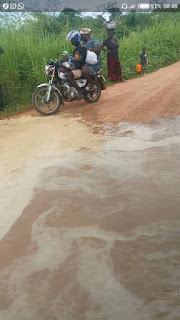Introduction
Bad roads, often characterized by potholes, cracks, uneven surfaces, and inadequate maintenance, are a ubiquitous concern that affects communities worldwide. While they might seem like minor inconveniences, the repercussions of poorly maintained roads can be far-reaching and impactful, impacting everything from daily commutes to economic growth and public safety.
The Toll on Commuters
One of the most immediate and tangible effects of bad roads is the toll they take on commuters. Bumpy rides caused by potholes and uneven surfaces not only result in discomfort but can also lead to vehicular damage, affecting the lifespan of vehicles and adding financial burdens to their owners. Moreover, longer commute times due to the need to navigate around damaged areas can lead to stress, fatigue, and decreased overall quality of life for individuals who depend on these routes daily.
Economic Implications
Beyond personal discomfort, bad roads have significant economic implications. Inefficient transportation networks due to road conditions can lead to higher fuel consumption, increased maintenance costs, and delays in the delivery of goods and services. These inefficiencies can contribute to rising transportation costs, affecting businesses and consumers alike. Furthermore, poorly maintained roads can deter potential investors and tourists, hampering local economic growth and development.
Public Safety Concerns
Public safety is another critical aspect affected by bad roads. Potholes and deteriorating surfaces can contribute to accidents, particularly for two-wheeler riders and pedestrians. The risk of skidding, loss of control, and collisions increases, posing a threat to human life. Emergency services' response times may also be affected due to the challenges of navigating damaged roads, potentially impacting the outcomes of critical situations.
Infrastructure Investment
Investing in infrastructure maintenance and improvement is essential for addressing the challenges posed by bad roads. Governments and relevant authorities need to prioritize the allocation of funds to ensure regular upkeep, repairs, and construction of safe and durable road networks. Neglecting this investment can lead to a vicious cycle where initial damage escalates, requiring more extensive repairs down the line and ultimately costing more resources.
Community Participation and Advocacy
Community engagement plays a vital role in addressing road-related issues. Citizens can collaborate with local authorities to report road damage promptly, ensuring timely repairs. Social media platforms and mobile applications can serve as tools for raising awareness and garnering support for road improvement initiatives. By actively participating in advocating for better roads, individuals can contribute to the well-being of their communities.
Technological Innovations
In recent years, technology has played a significant role in road maintenance and monitoring. Advanced techniques such as remote sensing, data analytics, and predictive modeling can help identify vulnerable areas and prioritize repairs. Some countries have even experimented with self-healing materials that can autonomously repair minor road damage. Embracing these innovations can lead to more efficient road management and longer-lasting infrastructure.
Conclusion
Bad roads are more than just an inconvenience; they represent a complex challenge with far-reaching consequences. From commuters' daily struggles to economic setbacks and safety concerns, the impact of poorly maintained roads cannot be ignored. Addressing this issue requires a collaborative effort involving governments, communities, and technological advancements to build and maintain road networks that are safe, efficient, and conducive to sustainable development. By recognizing the importance of investing in infrastructure and advocating for change, we can pave the way toward smoother journeys and brighter futures.

